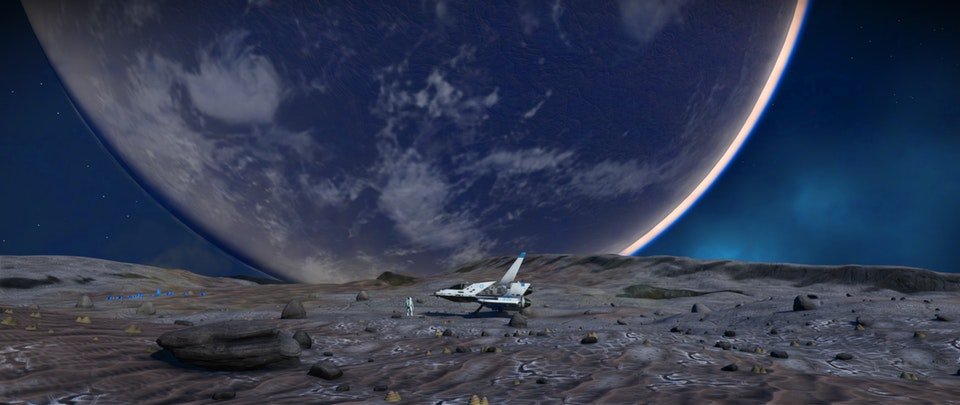“The greatest mystery the universe offers is not life but size. Size encompasses life, and the Tower encompasses size. The child, who is most at home with wonder, says: Daddy, what is above the sky? And the father says: The darkness of space. The child: What is beyond space? The father: The galaxy. The child: Beyond the galaxy? The father: Another galaxy. The child: Beyond the other galaxies? The father: No one knows.
“You see? Size defeats us.”
– The Man in Black, The Gunslinger
At launch, No Man’s Sky was a strange thing. If you judged it on the merits of its gameplay, there was plenty to dislike. If you judged it on the merits of its exploration, there was a surprising (apparent) limit to what was out there for you to find, whether hand-crafted or procedurally generated. Even its most ardent defenders would be hard-pressed contesting these points. Sure, its universe was unknowably massive, but if the gameplay was boring and the structures, waypoints, and relics were all the same, why bother? I felt this way at first. However, one evening as I left work, it dawned on me what this game had to offer: not engaging gameplay, nor limitless exploration. These were merely window dressing for size. No Man’s Sky was, and still is, a size simulator, and it contextualizes size better than anything else I’ve seen.
In my first evening playing NMS, I flew from my starting planet into orbit, and from there I touched on and explored all the planets in my first solar system. Satisfied, and pretty impressed with the game’s technological achievements, I went to bed. The next day, on my way home from work, I spotted the moon rising into the afternoon sky. As it was nearly full, I could see its craters, its roundness, and (though I had looked at the moon countless times in my life) for the first time, it seemed close. I could conceive of its distance. It was less a concept of the moon, this flat disc in the sky, than it had been the day before. It felt tangible, as if it was as much a part of the physical world I inhabit as the car I sat in, or the road I drove down. I saw depth in the sky where before I had seen none.
I didn’t find God or anything. I muttered, “Huh.” I held the moon’s alabaster gaze a little longer than I normally do. Later that night, aware and quite personally critical of NMS’ many flaws, I still happily turned it on and dove back in for an hour or two. I didn’t find anything that surprised me, I didn’t find a gun that felt good to shoot, I didn’t find a ship that felt good to fly, but to this day, I continue to benefit from how NMS illustrates relative size on a massive scale.

